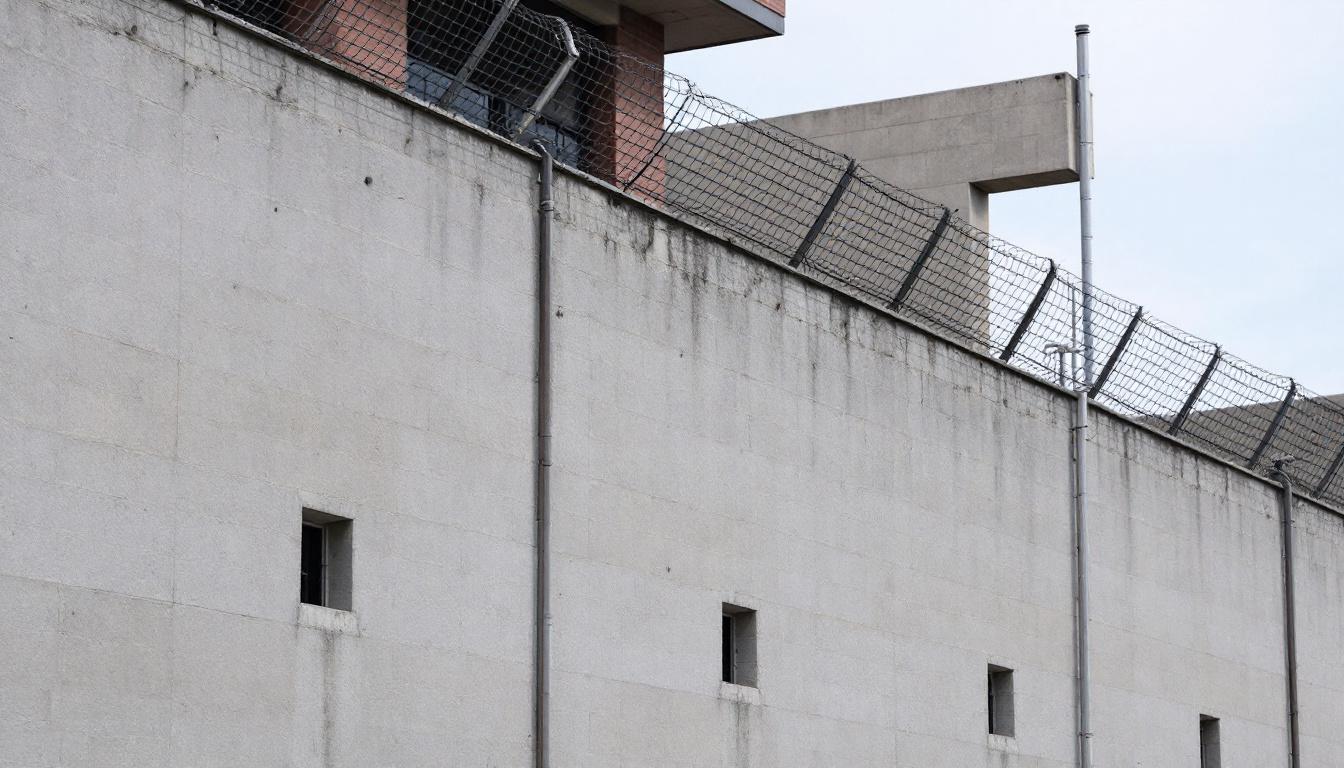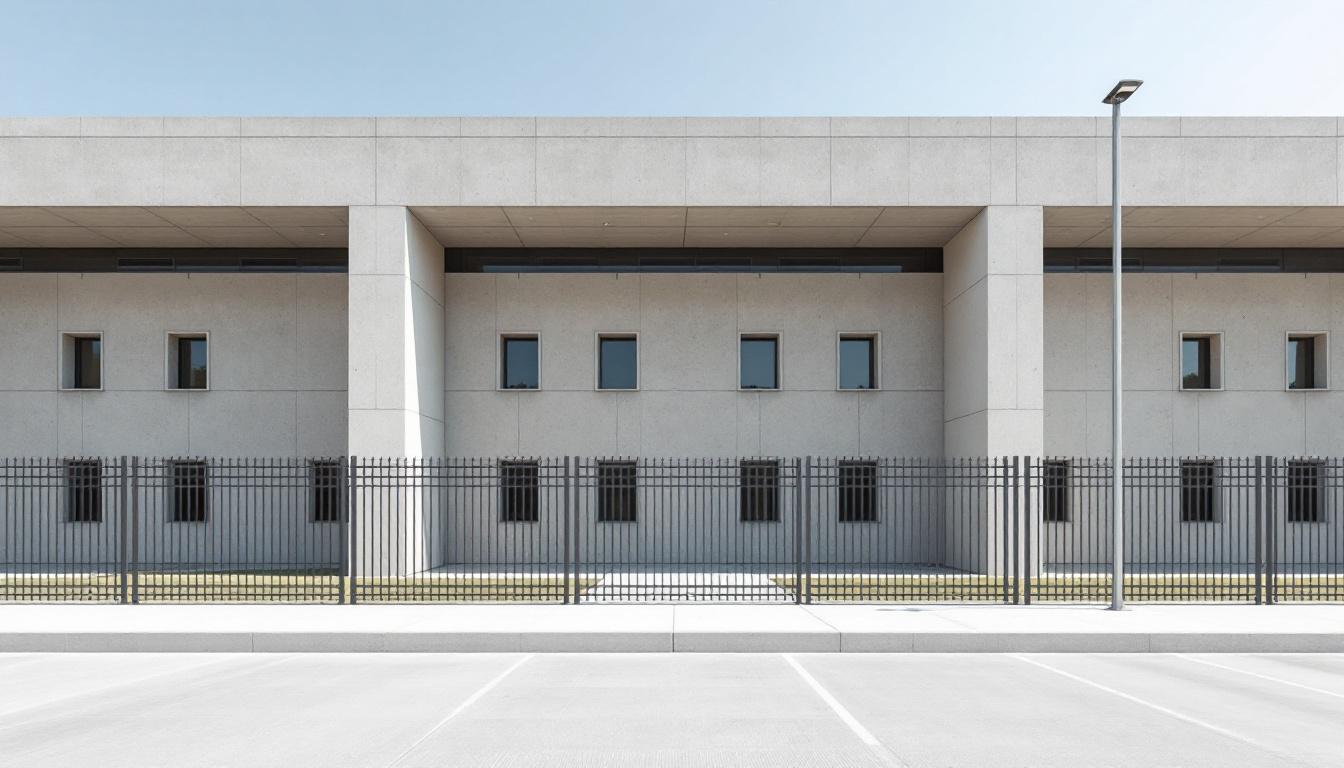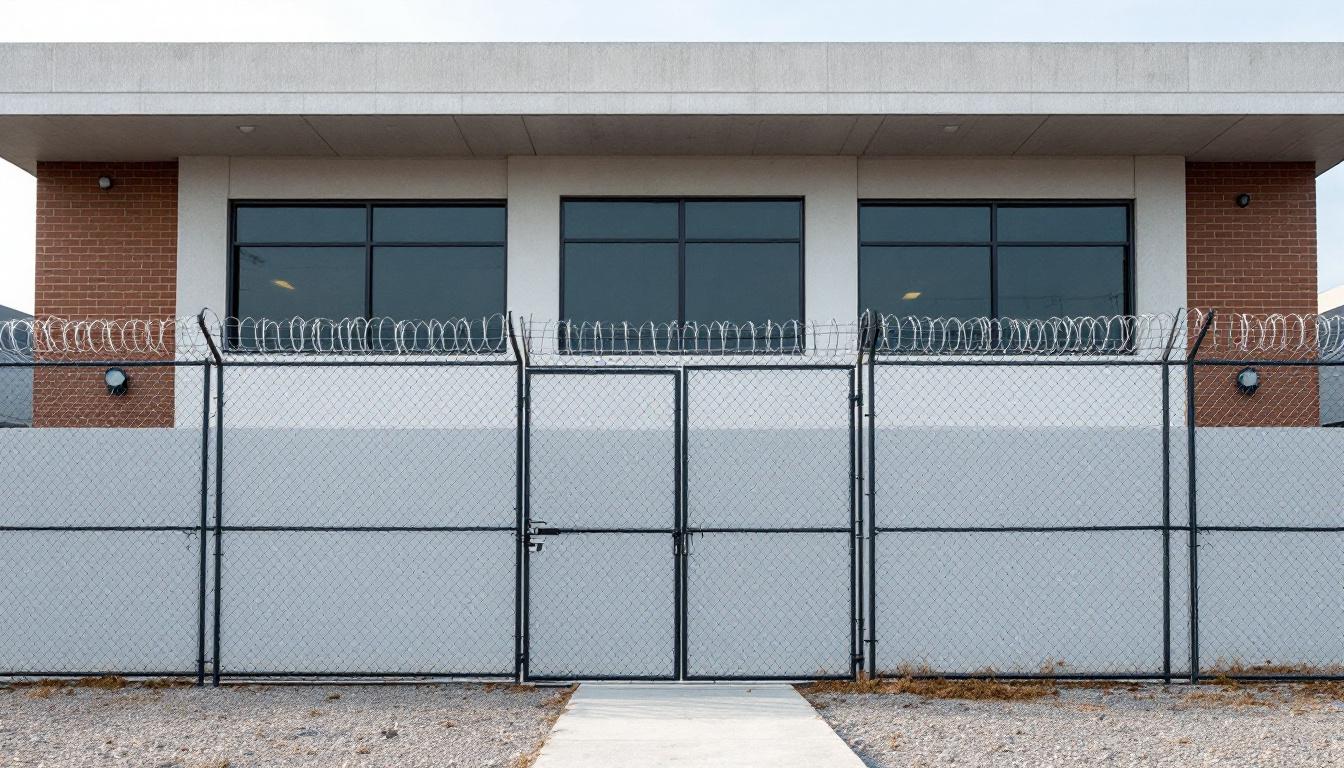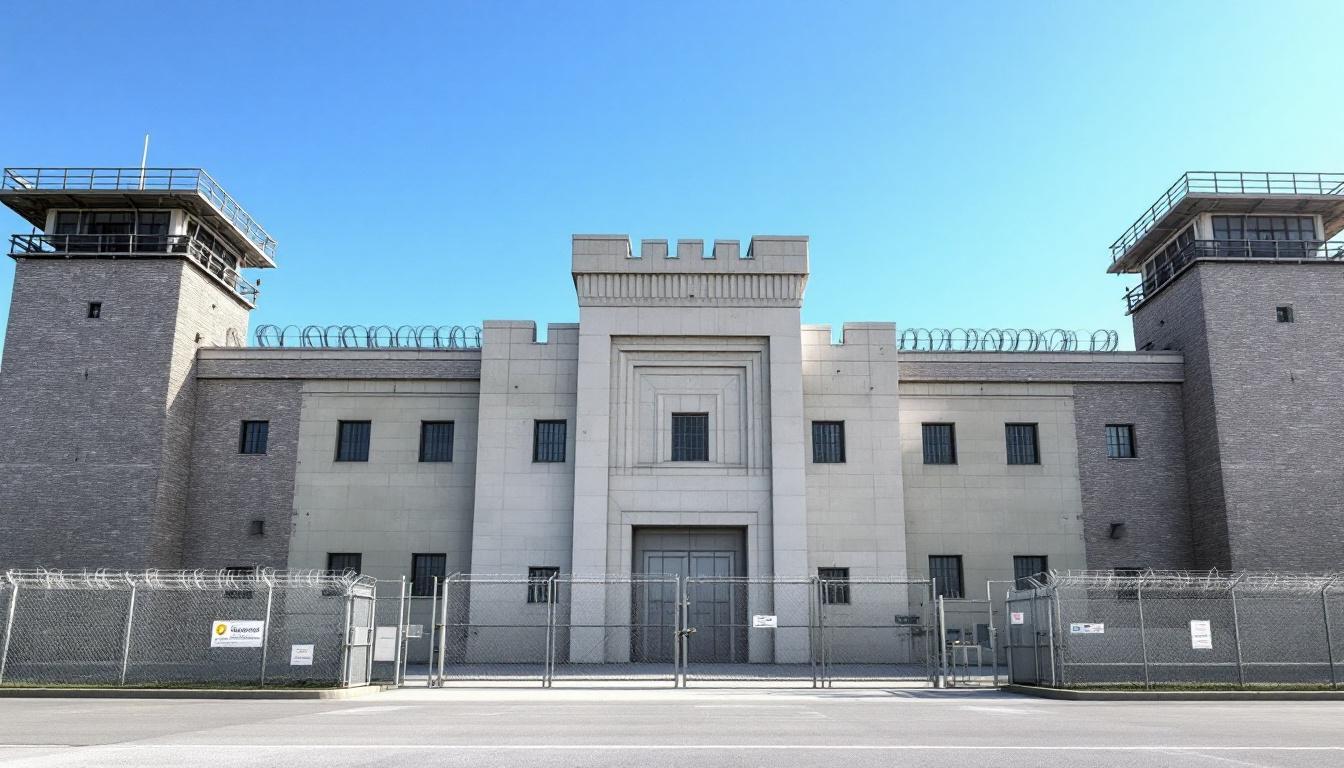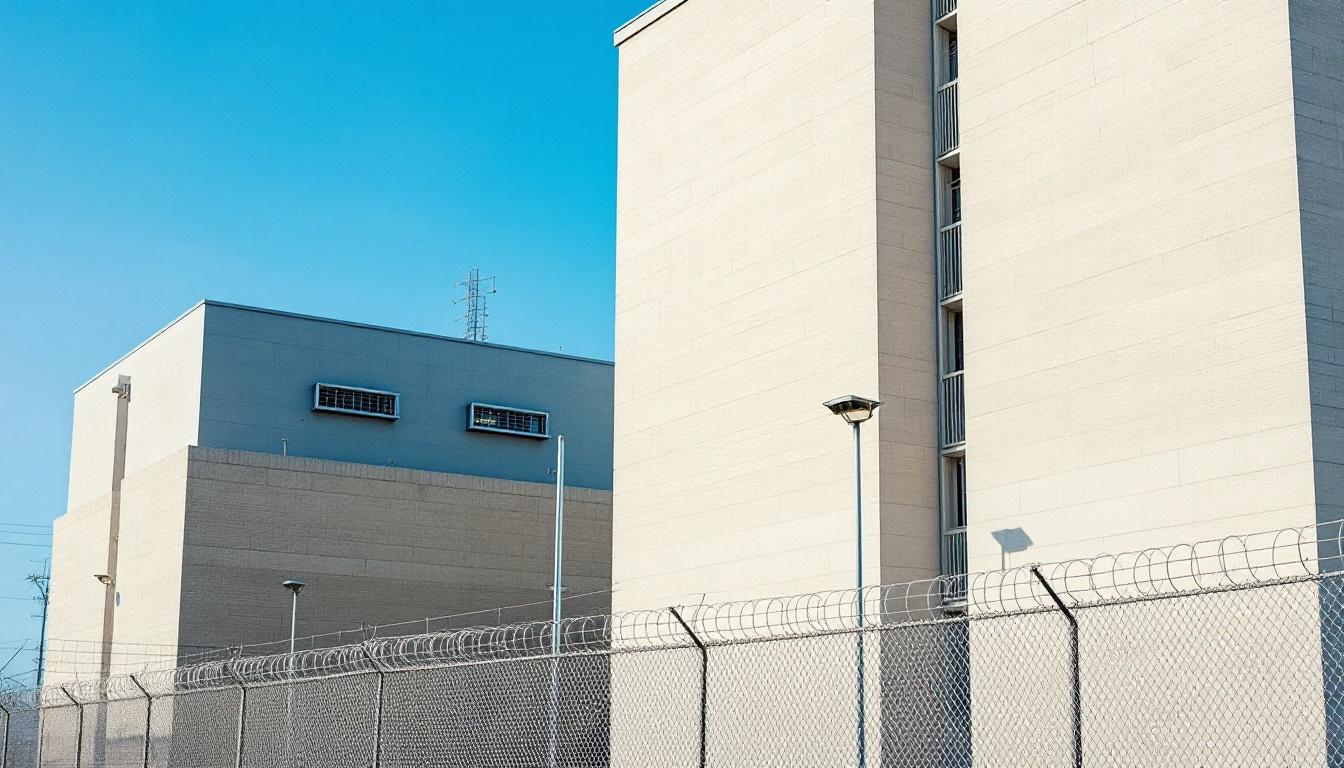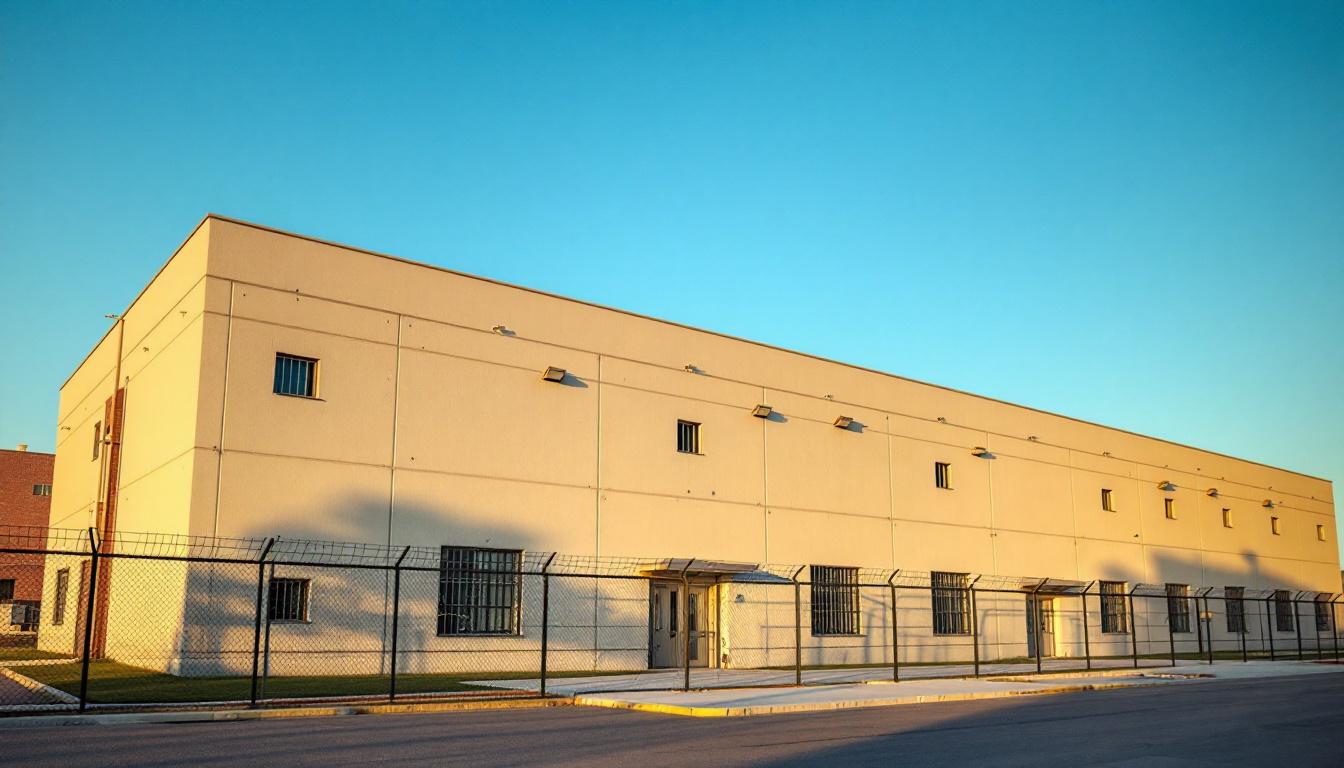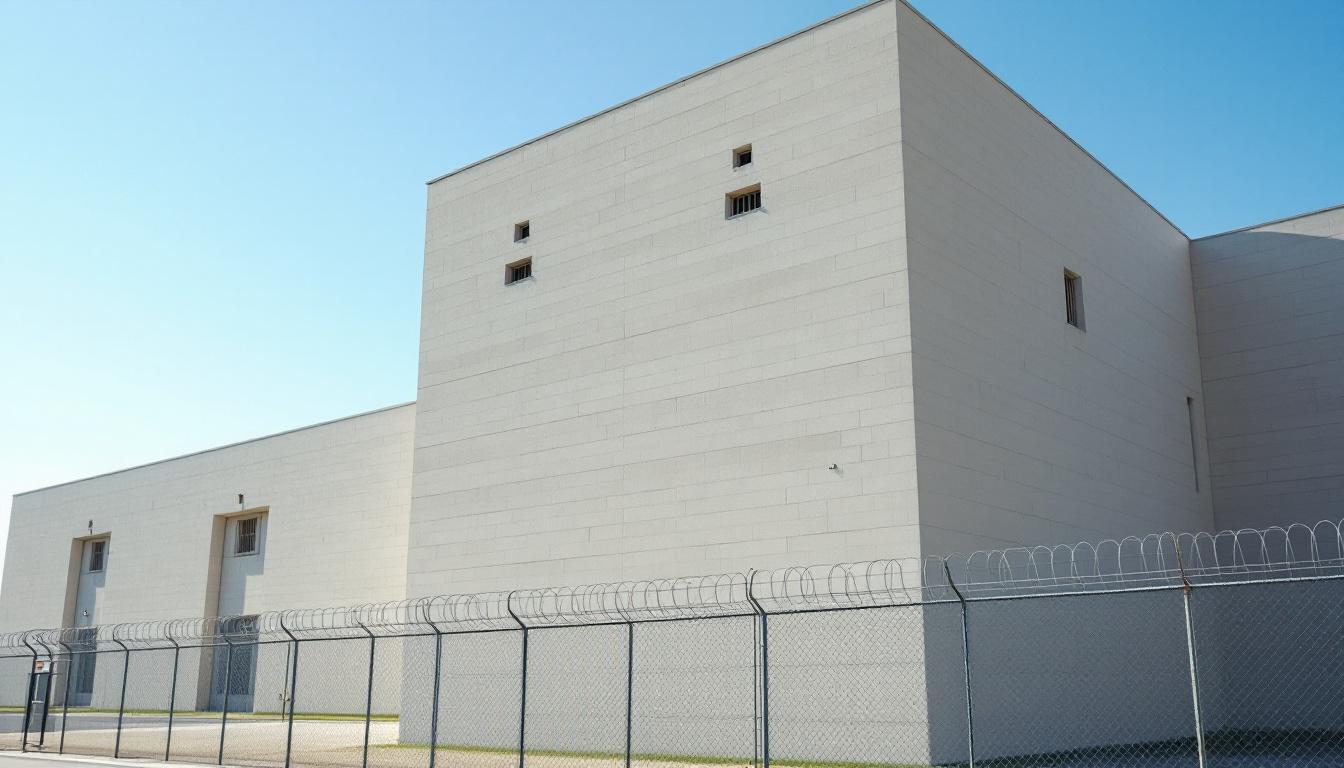
Quick Navigation
How to contact an inmate at Hudson County Correctional Center
This comprehensive guide will walk you through how to connect with an inmate at Hudson County Correctional Center. Follow the steps below to find an inmate and send letters and photos:
- Search for the inmate using our search tool below
- Create your account or log in to Penmate
- Write your message (up to 6,000 characters)
- Send instantly - inmates receive printed copies daily
Find an Inmate
Search for an inmate to start communicating today
Tip: You can search by first name, last name, or inmate ID number
To contact a person at Hudson County Correctional Center start by searching for the person on the official facility website. Perform a search by following these steps:
- Step 1: Enter their first name and last name into the search form and click "Search"
- Step 2: Locate their inmate record
- Step 3: Write down their Inmate ID and any housing information provided
Important! Be sure to enter the person's full name. Nicknames should not be used.
How to Send Messages to Inmates

You can use your phone or computer to send emails, letters, and photos to an inmate. Messages are sent electronically to inmate tablets or kiosks at the facility. If you would like to send a message, start by searching for an inmate at Hudson County Correctional Center.
Sending Photos and Postcards

A great way to send love and support to a loved one at Hudson County Correctional Center is to send photos and postcards. It only takes a few minutes to send photos from your phone and it makes a huge difference. You can also mail postcards with words of support and inspiration, or design your own postcard for special moments like birthdays and holidays.
Important! Be sure not to send any explicit photos or they may not be approved by the facility. You can also use a photo printing app like Penmate to make sure your photos are printed at the correct size (4x6 or 3x5) and are mailed according to the rules and regulations of Hudson County Correctional Center.
Frequently asked questions about Hudson County Correctional Center
-
How long does it take to deliver a message?
If you're sending an email message your letter is usually delivered within 24-48 hours. For messages sent via mail you should expect delivery within 3-7 days. All messages will need be approved by Hudson County Correctional Center.
-
How much does it cost to send a message to Hudson County Correctional Center?
You can send a message free using your phone or mail a message via USPS for the price of a $0.60 stamp and envelope. You can also purchase credits or e-stamps from services starting at $1.99.
-
What services can I use to contact an inmate at Hudson County Correctional Center?
Penmate
You can use Penmate to send letters and photos to an inmate from your phone. It's an easy way to stay in touch during your loved one's incarceration. Use the inmate locator to find an inmate's location and contact information, then you can send messages within a few minutes.
Securus messaging
Securus may be another option for communicating with an inmate at Hudson County Correctional Center. You can create a friends and family account and purchase credits to send messages. All messages will be reviewed and must be approved by the facility.
JPay
Some county jails and state prisons may support sending messages with JPay. You must register an account with the system, find your loved one, and purchase stamps to send messages. For some locations you can also attach photos.
Smart Jail Mail
You may also check if Smart Jail Mail is available at Hudson County Correctional Center. Smart Jail Mail is operated by Smart Communications and has contracted with some state and county jails. After purchasing credits, your messages and photos are sent to the facility, printed out, and then handed out to your loved one.
-
What is the mailing address of Hudson County Correctional Center?
Mailing address:
Hudson County Correctional Center
30-35 Hackensack Ave
Kearny, NJ 07032
Phone: (201) 395-5600Business hours:
- Monday: Open 24 hours
- Tuesday: Open 24 hours
- Wednesday: Open 24 hours
- Thursday: Open 24 hours
- Friday: Open 24 hours
- Saturday: Open 24 hours
- Sunday: Open 24 hours
-
What are the visiting hours at Hudson County Correctional Center?
Visiting hours at Hudson County Correctional Center vary by housing unit and security level. Generally, visits are scheduled on weekends and holidays, with some facilities offering weekday visits. Contact the facility directly at (201) 395-5600 or check their website for the current visiting schedule. Visits typically last 30-60 minutes and must be scheduled in advance.
-
What items are prohibited when sending mail to Hudson County Correctional Center?
Prohibited items typically include: cash, personal checks, stamps, stickers, glitter, glue, tape, staples, paperclips, polaroid photos, musical or blank greeting cards, hardcover books, magazines with staples, and any items containing metal or electronics. Only send letters on plain white paper with blue or black ink. Photos must be printed on regular photo paper (no Polaroids). Always check with Hudson County Correctional Center for their specific mail policies.
-
How do I send money to an inmate at Hudson County Correctional Center?
You can send money to an inmate at Hudson County Correctional Center through several methods: 1) Online using JPay, Access Corrections, or the facility's approved vendor, 2) Money orders mailed directly to the facility with the inmate's name and ID number, 3) Kiosks located in the facility lobby, or 4) Over the phone using a credit or debit card. Fees vary by method, typically ranging from $2.95 to $11.95 per transaction.
-
Can I schedule a video visit with an inmate at Hudson County Correctional Center?
Many facilities now offer video visitation as an alternative to in-person visits. At Hudson County Correctional Center, video visits may be available through services like Penmate, Securus Video Connect, GTL, or ICSolutions. Video visits typically cost $10-20 for 20-30 minutes and must be scheduled in advance. You'll need a computer or smartphone with a camera and reliable internet connection. Contact the facility for their specific video visitation policies and approved vendors.
-
What identification do I need to visit an inmate at Hudson County Correctional Center?
All visitors must present valid government-issued photo identification such as a driver's license, state ID, passport, or military ID. Minors must be accompanied by a parent or legal guardian who can provide the minor's birth certificate. Some facilities require visitors to be on the inmate's approved visitation list, which may require a background check. Contact Hudson County Correctional Center for specific ID requirements and visitor approval procedures.
-
How can I find out an inmate's release date?
To find an inmate's release date at Hudson County Correctional Center, you can: 1) Use the online inmate search tool if available, 2) Call the facility's records department, 3) Contact the inmate's case manager or counselor, or 4) Have the inmate provide this information during a call or visit. For privacy reasons, some facilities only release this information to immediate family members.
Facility Overview
Contact Information
Hudson County Correctional Center30-35 Hackensack Ave
Kearny, NJ 07032
Phone: (201) 395-5600
Official Website

About Hudson County Correctional Center
Supporting successful reintegration into the community stands at the heart of the Hudson County Corrections Facility, NJ's mission, serving residents throughout Kearny and the broader Hudson County region. Located within New Jersey's densely populated northeastern corridor, this correctional facility operates as a vital component of the state's justice system, providing secure housing while emphasizing structured programming designed to prepare individuals for their eventual return to society. The facility's strategic position in Kearny allows it to maintain strong connections with local community resources and support networks that prove essential during the transition process.
Within this NJ correctional facility, those incarcerated services typically encompass a comprehensive range of rehabilitation-focused programs that address the diverse needs of the population. Educational opportunities may include basic literacy instruction, GED preparation, and vocational training in practical skills that enhance employment prospects upon release. Mental health and substance abuse counseling often form cornerstone elements of the facility's approach, recognizing that addressing underlying challenges significantly improves long-term success rates. The structured daily routine generally incorporates work assignments, educational programming, and personal development activities designed to build positive habits and accountability.
The facility's commitment to serving the Kearny area extends beyond its walls through coordination with local organizations and agencies that provide continued support after release. Family visitation programs typically maintain crucial connections between those incarcerated and their loved ones, while case management services help individuals develop realistic reentry plans tailored to their specific circumstances. Through this comprehensive approach to correctional care, the facility strives to reduce recidivism while promoting public safety and individual transformation within the broader Hudson County community.
Programs & Services
Transformative opportunities for personal growth and skill development form the cornerstone of rehabilitation efforts for those incarcerated at Hudson County Corrections Facility. The facility's comprehensive approach recognizes that meaningful change requires structured pathways that address both immediate needs and long-term reintegration goals. Through carefully designed offerings that emphasize security, safety, and structured learning environments, participants may access resources that foster accountability while building essential life skills for successful community reentry.
Educational advancement and vocational skill development typically serve as fundamental pillars of the facility's programming structure. Those incarcerated may furnish themselves with literacy improvement services, GED preparation courses, and basic computer skills training that provide essential foundations for future employment opportunities. Moreover, vocational offerings often include practical trade skills such as carpentry, food service preparation, and maintenance techniques, allowing participants to develop marketable competencies within a secure and supervised environment that prioritizes both learning outcomes and institutional safety protocols.
Therapeutic interventions and peer-based support systems complement the educational framework through specialized treatment modalities designed to address underlying behavioral patterns. Substance abuse treatment programs typically incorporate evidence-based approaches that help participants understand addiction cycles while developing healthy coping mechanisms. Moreover, sex offender treatment services may offer structured therapeutic environments where participants engage in cognitive-behavioral interventions under professional supervision. Peer support groups often provide additional layers of accountability and mutual encouragement, creating communities of shared experience that reinforce positive behavioral changes while maintaining the structured security measures essential to facility operations.
Daily Life & Visitation
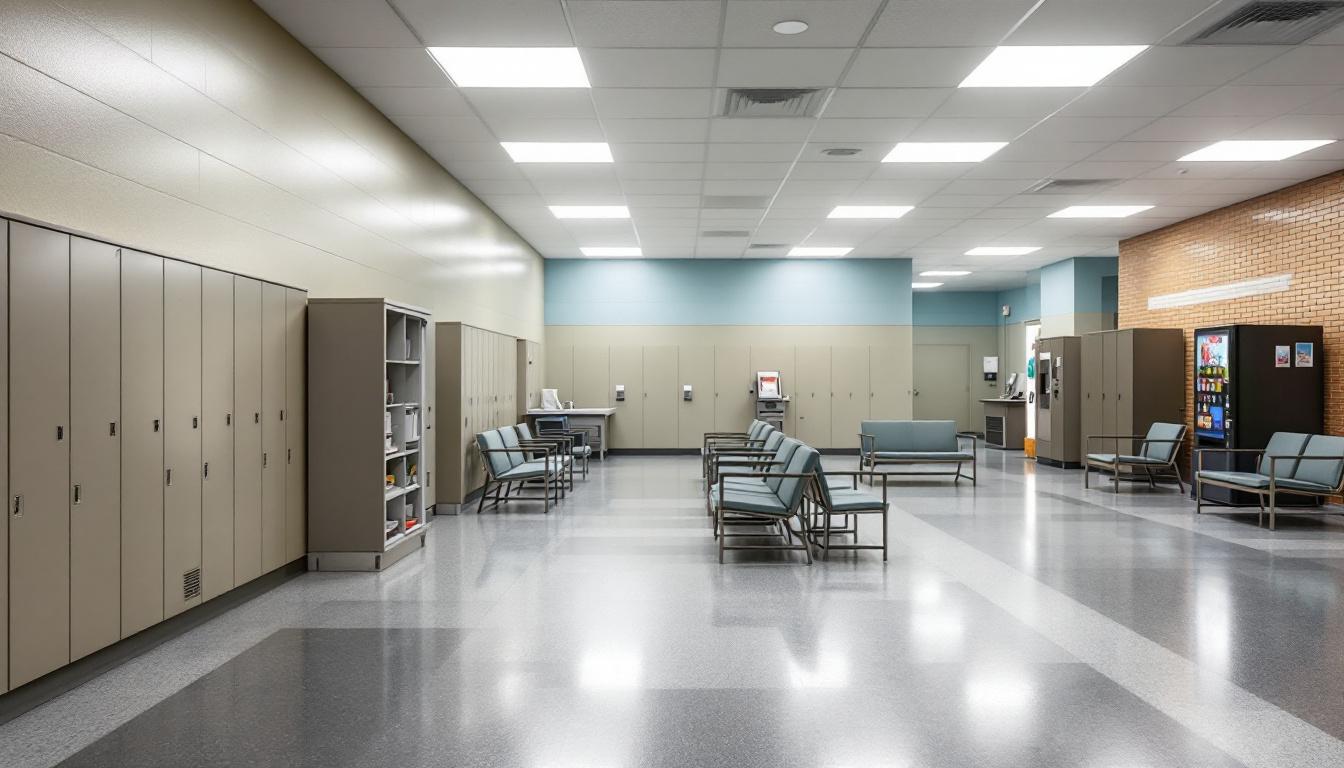
Family connections and community bonds form the cornerstone of resilience for those incarcerated at Hudson County Corrections Facility, where maintaining relationships with loved ones becomes a vital part of navigating the structured daily environment. Those incarcerated now follow a regimented schedule that regularly includes designated times for meals, programming, recreation, and personal activities, with the rhythm of institutional life punctuated by opportunities to connect with the outside world through visits, phone calls, and correspondence. The facility typically operates on a system where housing units are awakened early in the morning, with residents moving through breakfast, work assignments or educational programming, lunch, afternoon activities, dinner, and evening recreation before lights-out, creating a predictable framework that helps individuals adapt to their temporary circumstances.
Moreover, living accommodations generally consist of shared cells or dormitory-style housing units, where those incarcerated often develop supportive relationships with their cellmates and unit neighbors, creating informal networks of mutual assistance and companionship. The dining arrangements typically involve scheduled meal times in common areas, where residents gather to share not only food but also conversation, news from home, and emotional support, fostering a sense of community even within the institutional setting. Personal property allowances usually permit individuals to maintain some personal items, photographs of family members, and commissary purchases that help preserve connections to their identity and relationships outside the facility walls.
Recreation and exercise opportunities regularly furnish both physical outlets and social interaction, with common areas, television rooms, and outdoor recreation yards serving as gathering spaces where friendships develop and information is shared among residents. Whereas the structured programming schedules may include educational classes, substance abuse counseling, or vocational training, these activities often become venues for peer support and personal growth discussions. Visitation policies typically allow family members and approved friends to maintain face-to-face contact during designated hours, while telephone privileges and mail correspondence provide additional avenues for those incarcerated to sustain the emotional bonds that prove essential for maintaining hope and planning for successful reintegration into their communities upon release.
Ready to Connect?
Start communicating with your loved one today
Search for an Inmate
